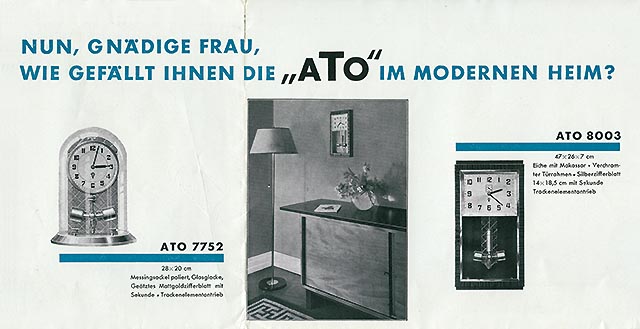
Unusual Exotic Clocks – Electric Clocks Around 1930
Some strange products flourished among the electrical clocks manufactured in the Black Forest between the two World Wars. Most of these exotic ideas proved to be shelf warmers.
The brush armature by the Badische Uhrenfabrik (Baden Clock Factory) and the pulsating hammer clock by Jauch (abbreviated “Puja”) held the promise of an automatic winding mechanism. The latter clock was a truly wild idea in the shape of a swastika. The Puja clock would be wound by evaporating alcohol in closed glass tubes.
When air is heated it expands. Around 1930 Junghans took advantage of this fact to wind clock movements or to relay the time to secondary clocks of small synchronised time systems. To suit this purpose, these “Elektronom” clocks contained heating tubes and rubber air hoses.
Even the optically attractive “Ato“ clocks, with their electrically powered pendulum, were still rare in the 1930’s. Sales in these clocks began to pick up rather well in the 1950’s and early 1960’s, when transistor technology made them more reliable.